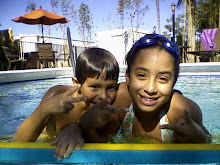Classical Conditioning is the type of learning made famous by Pavlov's experiments with dogs. The gist of the experiment is the following: Pavlov presented dogs with food, and measured their salivary response (how much they drooled). Then he began ringing a bell just before presenting the food. At first, the dogs did not begin salivating until the food was presented. After a while, however, the dogs began to salivate when the sound of the bell was presented. They learned to associate the sound of the bell with the presentation of the food. As far as their immediate physiological responses were concerned, the sound of the bell became equivalent to the presentation of the food. I believe the same will work with any elephant in my circus.
Classical conditioning is used by trainers for two purposes: To condition (train) autonomic responses, such as the drooling, producing adrenaline, or reducing adrenaline (calming) without using the “stimuli” that would naturally create such a response; and, to create an association between a stimulus that normally would not have any effect on the animal and a stimulus that would. Classical conditioning is very important to animal trainers, because it is difficult to supply an animal with one of the things it naturally likes (or dislikes) in time for it to be an important consequence of the behavior.
Similar to classical conditioning, operant conditioning studies the response of the learner following a stimulus; however, the response is voluntary and the concept of reinforcement is emphasized. The relationship in operant conditioning includes three component parts: the stimulus, a response, and the reinforcement following the response.
Operant conditioning is the modification of behavior brought about over time by the consequences of said behavior. Operant conditioning is distinguished from Pavlovian conditioning in that operant conditioning deals with voluntary behavior explained by its consequences, while Pavlovian conditioning deals with involuntary behavior triggered by its antecedents.
In operant conditioning, the terminal (or desired) behavior should be specified in precise, observable terms before conditioning begins; instead of "instructional objectives," then, the ideal is a behavioral objective, with three specified components: (1) an observable, measurable outcome; (2) explanation of the conditions under which the behavior should be exhibited; and (3) the criterion for judging the acceptable performance of the behavior.
Subscribe to:
Post Comments (Atom)


























No comments:
Post a Comment